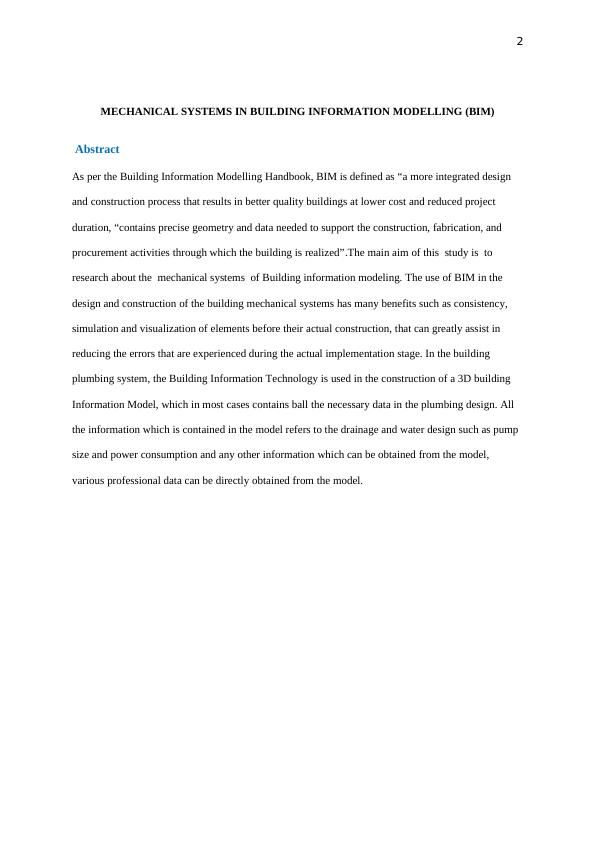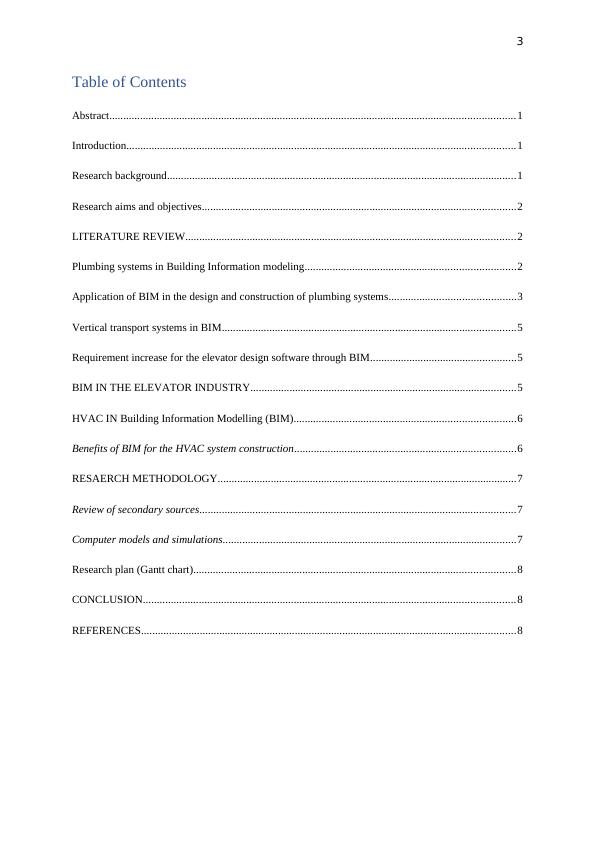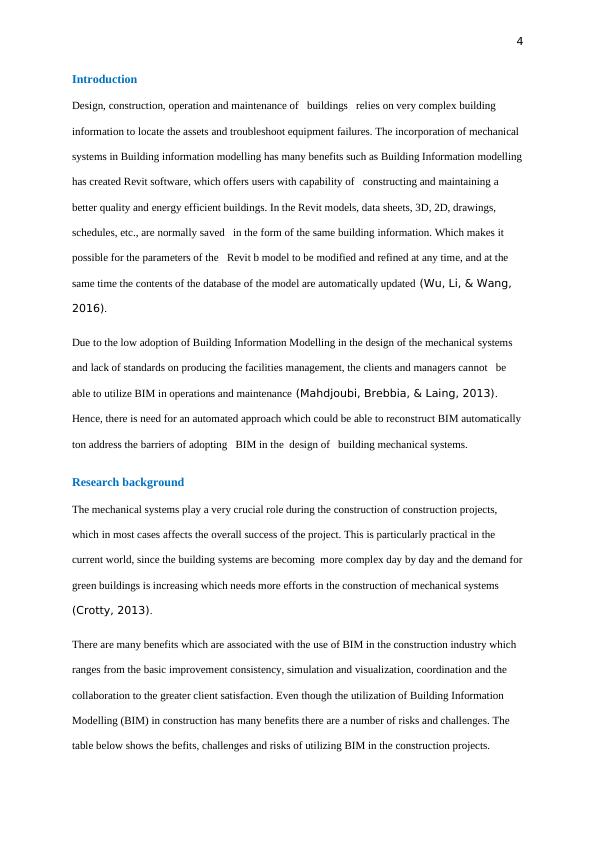Mechanical Systems in Building Information Modelling (BIM)
Design proposal of a thermal conductivity measurement device for use in measuring Phase Change Materials (PCM) for thermal energy storage applications.
16 Pages3701 Words97 Views
Added on 2022-11-25
About This Document
This research project explores the use of Building Information Modelling (BIM) in the design and construction of mechanical systems in buildings. It discusses the benefits and applications of BIM in plumbing systems, HVAC systems, and vertical transport systems. The research aims to understand how BIM has assisted in the design and installation of these mechanical systems.
Mechanical Systems in Building Information Modelling (BIM)
Design proposal of a thermal conductivity measurement device for use in measuring Phase Change Materials (PCM) for thermal energy storage applications.
Added on 2022-11-25
ShareRelated Documents
End of preview
Want to access all the pages? Upload your documents or become a member.
The engineering firm is better
|7
|1309
|24
Building Information Modelling (BIM): Now and Beyond
|2
|517
|366
Assessment of user satisfaction in an intelligent office building
|13
|1911
|11
Building Information Modeling in the Construction Industry
|5
|841
|456
Impact of Building Information Modeling (BIM) on People Management Processes in Construction SMEs
|11
|3491
|70
Benefits and challenges of Building Information Modeling
|57
|18243
|1




